The trouble with being the jumping off point for somewhere as magnificent as Machu Picchu is that there’s a tendency for some visitors to pare back their Cusco itinerary in favour of making sufficient time to trek the Inca Trail.
But a brief stopover in a city as enchanting as Cusco would be a travesty. It’s easy to lose weeks in the former capital of the Incan Empire without feeling you’ve covered all the ground; at the very least you can visit the most important sights in a couple of days though that would be a rush.
I’ve travelled to Cusco multiple times over the last two decades and never tire of the place. It’s the kind of city where whiling away the hours doing nothing more than people-watching from a café balcony overlooking the main square can be one of the highlights of your trip. This is a city to be savoured, slowly, to linger long enough for the essence of the place to seep beneath your skin and into your heart.
I fell in love with Cusco in the summer of 1995. Water was rationed and the city’s fountains were dry. Electricity came and went also, and unlike the water, couldn’t be stored in a bucket for use on demand. Abject poverty was evident, even in the prosperous Central Business District.
Young kids with sun-reddened, grubby cheeks led lambs and beribboned llamas to the main square in the hope of making a few soles from a photo. Knackered, rusting saloons creaked to a halt, sometimes planned, sometimes not, their boots stuffed with alfalfa to feed the animals.
In the intervening years, time has been kind. The tourist dollar has trickled down creating an air of prosperity yet the planners have had the foresight to ensure development hasn’t been intrusive. Starbucks and McDonalds both occupy prime real estate right on the square, but their signage is so discreet you’ll notice them long after your eye has taken in the majestic cathedral and the exquisite carvings of La Compañía.
Cusco Travel Tip
It’s well worth paying for a centrally located hotel for the convenience of being able to enjoy views over the plaza. Try the various options on Portal de Comercio or Portal de Panes which cater to most budgets yet still offer views over the square.
Qorikancha
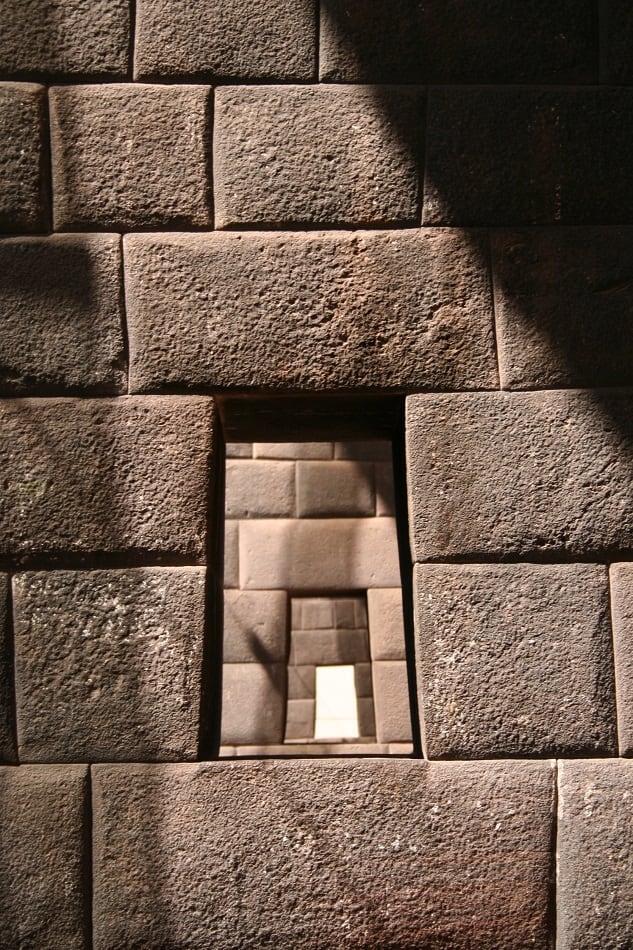
There are various spellings for this, the most important temple in the territory of the Incan Empire, but however you write it, it’s a must-see. When it was built, the walls of this enormous structure were covered with pure gold; inside there was more of the precious metal in the form of sculptures and ornaments.
When the Spanish conquistador Francisco Pizarro captured the Inca leader Atahualpa in the northerly city of Cajamarca, tricking him into paying a ransom, much of the gold that was demanded was stripped from Qorikancha. You could easily be forgiven for thinking that it’s no longer an impressive sight, but the stonework and church that stands where the temple once commanded such attention are more than worth a look.
The Plaza de Armas
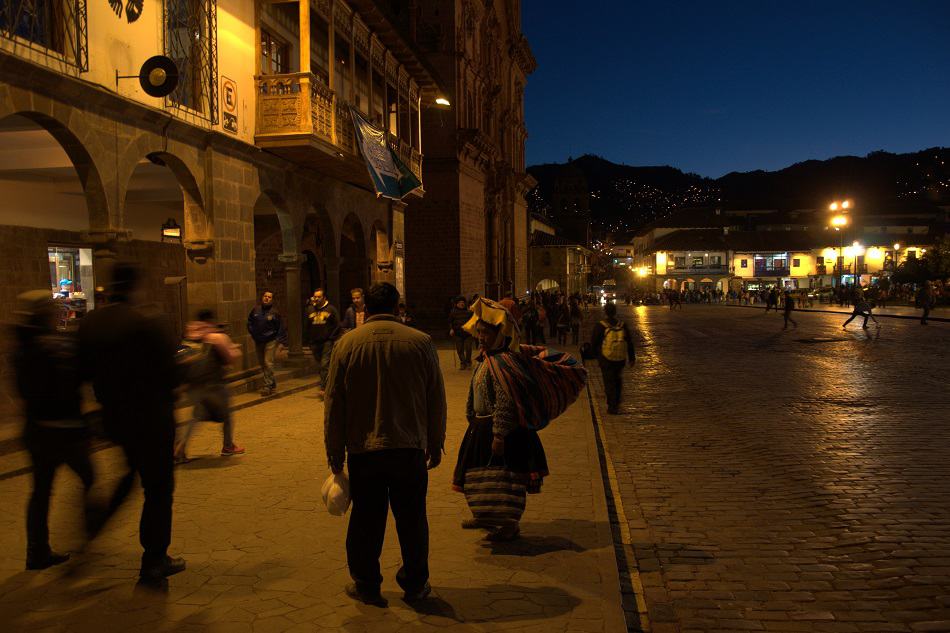
A short stroll up the hill from Qoricancha, you’ll find the Plaza de Armas. Cusco’s main square snatches only a few hours sleep, busy with locals and tourists from the early morning until late at night. Laid out in 1533 overseen by Pizarro, the Spanish cannibalised the Incan structures, retaining their huge blocks as foundation stones on which to construct their own palaces and churches.
The cathedral is a case in point. What’s now the seat of the Roman Archdiocese of Cusco was built on top of what was once Kiswarkancha, the palace dedicated to Wiraqocha, and the adjacent Suntur Wasi, housing Incan weaponry.
Demolishing such a culturally important space was deliberate; the Spanish had come to conquer, and to remain. For today’s visitor, climbing the steps is a rite of passage. The cathedral is imposing and solid, a repository for a huge collection of colonial art. The oldest painting depicts the earthquake of 1650, a reminder that the ground beneath your feet isn’t always well-behaved.
A few short years after the Catholics began to construct their cathedral, construction of a rival church commenced, this time over the foundations of what had once been the palace belonging to Wayna Qhapaq, the eleventh emperor or Sapa Inca. In La Compañia, the Jesuits arguably created a more beautiful building, its ornate façade irritating the Bishop of Cusco who lodged a complaint with the Pope, but to no avail.
Cusco Travel Tip
The cathedral has an entrance charge of 25 soles. If you’re keen on churches, the Boleto Religioso covers several sites and at 40 soles works out cheaper than separate admissions. Attending mass is free.
Cuesta San Blas
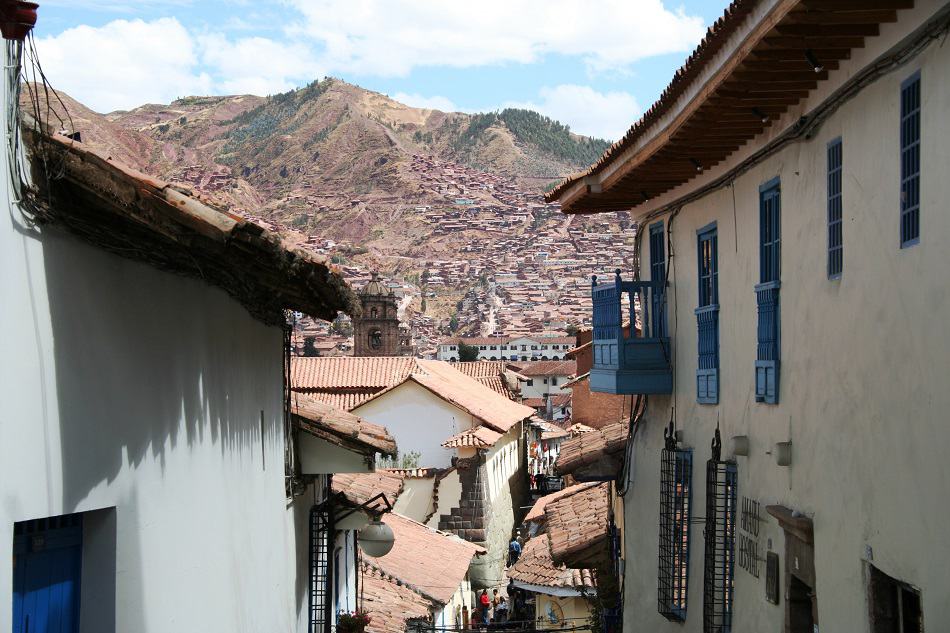
From the main square, narrow streets nudge their way out of the bottom of the basin and straggle up the steep hillside. One of the most atmospheric neighbourhoods is without a doubt San Blas. As you climb out of the square via Calle Triunfo and then a cobbled alleyway called Hatunrumiyoc, you’ll walk alongside an Incan stone wall, once the foundations of Palacio Inka Roc’a, the home of the sixth Incan emperor.
Each stone fits perfectly together – the Incans were precision engineers – and a crowd often gathers to snap a selfie with its most famous block: a twelve angled stone. The Incan stonemasons were so skilful that they needed no mortar to hold the stones together; not even a page from your passport can be slid between the stones.
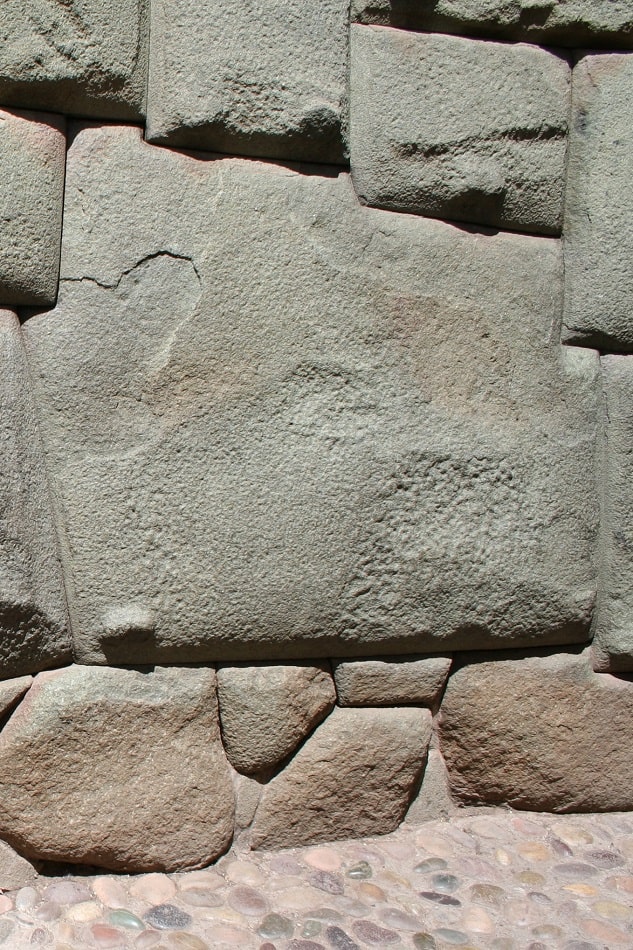
Higher up, passing numerous souvenir shops and galleries, you’ll emerge in Plaza San Blas. This arty district hosts an artisans’ market on Saturdays but there’s plenty to occupy your time whatever day you rock up. There are fantastic views from the church tower but it’s the story behind the pulpit that draws the crowds.
Legend has it that the wood carver promised to create a masterpiece for free if he was cured of leprosy; this being the case he worked for ten years but changed his mind and submitted a bill for his work. He fell from the pulpit, smashing his head in the process; what’s supposed to be his skull can be seen at the top of the carving.
Opposite the church, Museo de la Coca tells the story of the infamous leaves that, if they fall into the wrong hands, become cocaine. Cusco sits at an altitude of about 3200m, meaning most visitors will notice the impact on their lungs if they try anything strenuous.
If you still need a reason to justify hanging out in Cusco, then spending a few days acclimatising before your Inca Trail trek might just be it. Locals swear by the coca leaf to cope. In every hotel, there’ll be a bowl of leaves ready to infuse in boiling water; for those that find this coca tea too bitter, even with the addition of sugar, boiled sweets are provided as an alternative. For the most effective remedy, go native and tuck a small wad between your teeth and cheek to suck as you walk.
A Taste for Guinea Pig
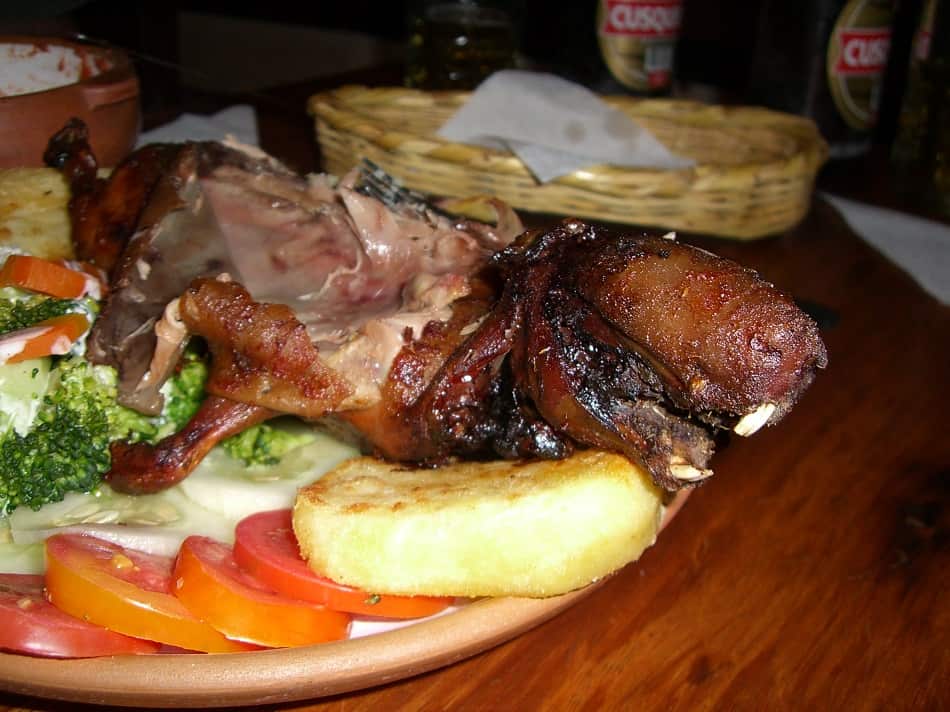
Over the past few years, Peruvian cuisine has upped its game and the number of decent restaurants in the country has increased dramatically. While Lima rightly wears the crown as the gastronomy capital of Peru, Cusco isn’t far behind, with plenty of award-winning restaurants now doing their thing to great acclaim.
Across Plaza San Blas, Pachapapa offers a place to try one of the most iconic dishes of the Peruvian Andes: guinea pig. For some, the thought of eating what might have been a childhood pet is too awful to contemplate, but those with a culinary sense of adventure won’t be disappointed by the taste – a combo of the darker meat of a chicken with the crispy skin of roast duck.
If it helps, the waiter will chop off the creature’s head but be warned those tiny claws are hard to ignore, blackened or otherwise. There’s not much meat on the bones of your average cuy, the local name for guinea pig, so it’s commonly served with a large potato. Potatoes originate in Southern Peru too, of course.
For the hopelessly squeamish, there are plenty of other authentically Peruvian dishes to try. Begin with rocoto relleno, stuffed peppers that come with quite a kick. Purists will argue that you should save these for Arequipa, where they originate, but once you’ve had them, you’ll be unable to resist the opportunity to eat them again.
Causa is also on the menu; despite the name being derived from the Incan word kausaq, this one more commonly hails from the coast. This cold potato mash dish is tastier than it sounds, packed with shrimp, tuna, avocado and tomatoes mixed with spicy aji amarillo (yellow pepper) sauce. With a whole host of other national favourites including lomo saltado, aji de gallina and anticuchos (skewers of cubed alpaca meat) rounding off the menu, you’ll be spoilt for choice.
The Fortress of Sacsayhuaman
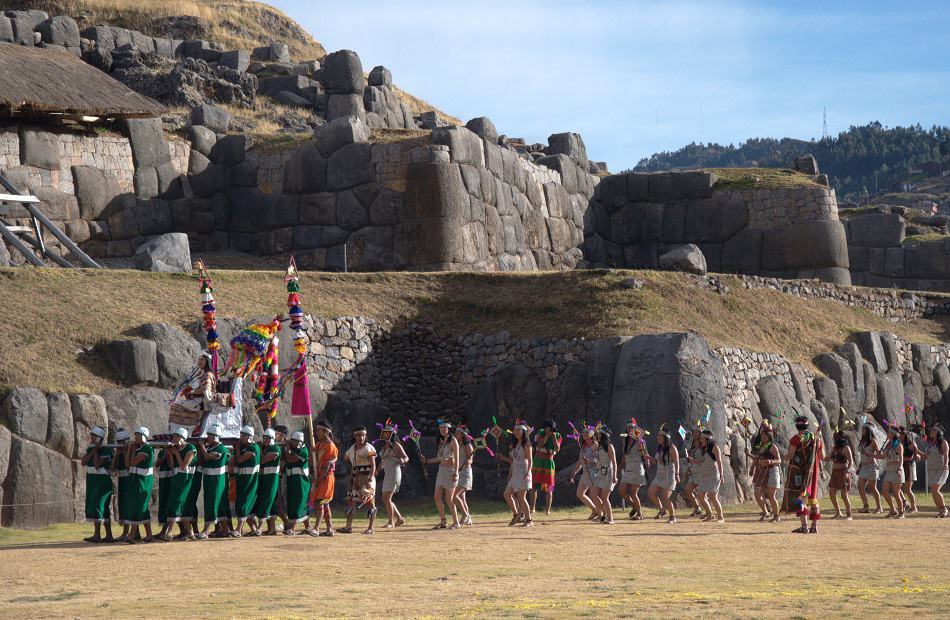
Higher still, if your lungs can take it (jump in a taxi if not) is Sacsayhuaman. The guides that tout for business at its gates have been telling the same joke for twenty years, at least, so don’t be surprised to hear them chuckle at their own pun when they tell you to call it Sexy Woman.
But there’s nothing sexy about this place, or feminine. These huge blocks of granite, creating a nine-metre high wall, are as butch as architecture gets. No one knows exactly what it was used, perhaps a shrine or maybe a fortress. The wall lines what’s called a kancha, like a great plaza.
Each June, timed to coincide with the winter solstice, Sacsayhuaman is the setting for Inti Raymi, during which a ceremony of sacrifice honouring the sun god Inti is re-enacted in front of a privileged audience. After watching the parade in the Plaza de Armas, half of Cusco streams up the hill to take their place facing the wall.
Allow plenty of time, even if you plan to get a ride; don’t make the mistake I made and leave late. Abandoning the taxi next to a skip full of scavenging dogs, I was forced to run the rest of the way. I had that many coca leaves stuffed into each cheek I looked like a hamster and wheezed through the first half an hour of the show to the great alarm of my immediate neighbours.
Those that can’t secure seats occupy the nearby grassed banks in the hope of catching a distant glimpse of the action, their pulsating sound systems and picnics testament to realistic expectations. The atmosphere is electric. From start to finish it’s an incredible spectacle, from the almost never-ending parades of colourfully dressed extras representing Inca warriors, musicians and the Nustakunas (chosen women) who scatter flower petals on the floor in preparation for the Sapa Inca’s arrival.
There’s some debate as to whether the sacrifice of a llama is genuine or not, so realistic are the effects, but the official line is that no animals are harmed for this theatrical production. The organisers couldn’t have found a better stage if they’d have looked throughout Peru and it’s no shock to learn that this is the biggest event on the city’s cultural calendar.
Cusco Travel Tip
A dedicated Inti Raymi website goes live shortly before the event, but to be sure of a ticket you can purchase them through one of Cusco’s many travel agents or via your hotel or hostel. At all other times of the year, you’ll need the Boleto Turistico to access Sacsayhuaman.
The Boleto Turistico
A few years ago, the Cusco authorities bundled its main sights into one package. Covering not only Qoricancha but also the likes of Sacsayhuaman as well as the key attractions of the nearby Sacred Valley such as Ollantaytambo, this isn’t a ticket you can do without. It costs 130 soles and lasts 10 days, which is more than ample for seeing the fourteen sights covered and well worth the financial outlay.
I could go on. Such is the plethora of attractions found in Cusco that I’ve merely scratched the surface. Near Sacsayhuaman, you’ll find the Red Fortress of Puca Pucara, the Inca baths at Tambo Machay and maze-like Q’enko with its zigzagging canals and sacrificial stone.
Back in the city, you can make chocolate at ChocoMuseo, haggle for alpaca mittens at San Pedro market or contemplate a monastic life at Santa Catalina convent. As darkness falls, I’ve yet to find a better beer than the locally brewed Cusqueña anywhere on the planet and the city’s buzzing bars and clubs will keep even the most discerning of night owls happy.
So don’t be in too much of a hurry to ditch Cusco and hit the trail. You’ll be back, for sure, but parting will be a wrench.